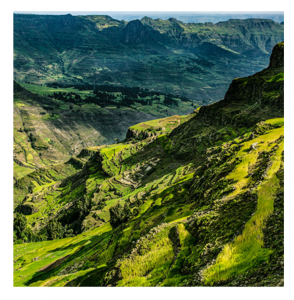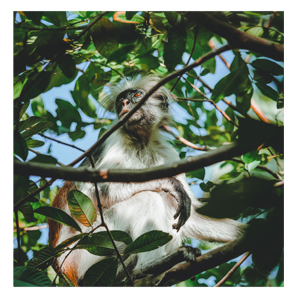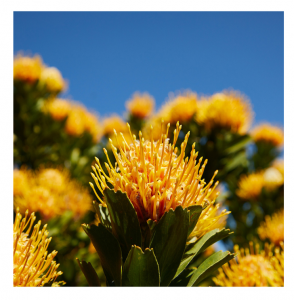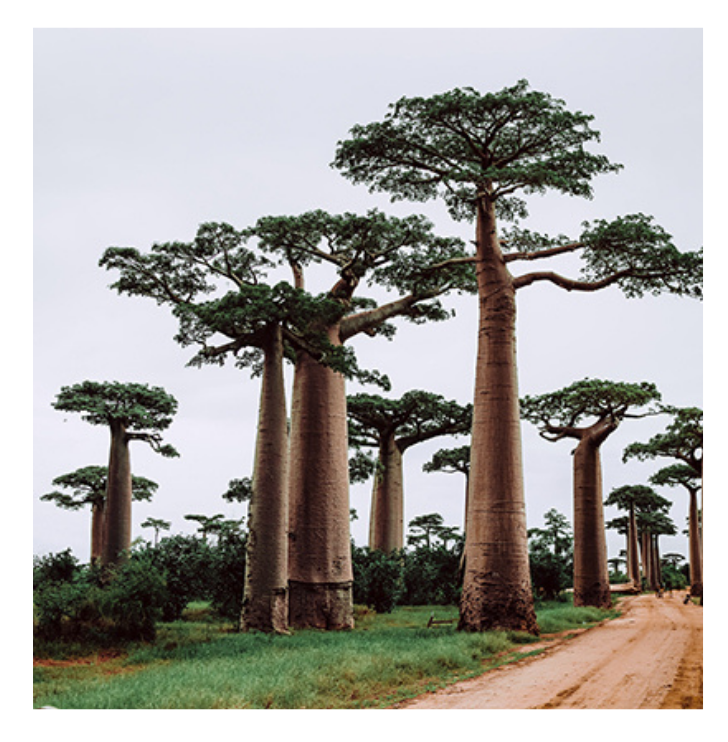Five biodiverse places in Africa
Africa is home to one fifth of all mammal, bird, and plants species! Laura Gelder runs us through her top picks for the continent's biodiversity hotspots...
Five Biodiverse Places in Africa is a feature from Issue 9 of Charitable Traveller. Click to read more from this issue.
1. The Horn of Africa
Shaped like the horn of the rhino, this region inside Africa’s north-eastern peninsula encompasses the countries of Somalia, Eritrea, Djibouti and Ethiopia. It’s one of only two biodiversity hotspots that is classed as arid but is still home to around 220 species of mammal alone, including the critically endangered Somalian wild ass, the desert warthog and
the silver dikdik, a tiny antelope that weighs less than most cats and stands just 30cm high.


2. East Africa's Coastal Forests
Along Africa’s Indian Ocean coast lies a tropical forest region that stretches from Somalia to Mozambique and includes parts of coastal Kenya and Tanzania, including islands like Zanzibar. The rich and complex vegetation includes dry forests and mangroves and interestingly the 40,000 varieties of African violet which form the basis of a multi-million dollar global houseplant trade, are all derived from a few species found here. The forests are home to a variety of primate species including the critically endangered Tana River red colobus.
3. Lake Malawi
The world’s ninth largest freshwater lake, located between Malawi, Mozambique and
Tanzania, has more species of fish than any other lake in the world and of these 90% are endemic. Perhaps its most fascinating inhabitant is the cichlid, a colourful fish that’s found all around the world but comes in 600 species here. Biologists think Cichlids are vital to our understanding of evolution because of the mind-boggling rate at which they generate new species – a new one is produced every 20 generations!


4. The Indian Ocean Islands
Between them, Madagascar, Mauritius, the Comoros and the Seychelles are home to
11,200 endemic plant species, ranging from the bottom-shaped coco de mer from the
Seychelles (which produces the world’s largest and heaviest seeds) to the spiny octopus trees of Madagascar. More than 80% of the flora and fauna on Madagascar can only be found on the island, including its cute lemurs, of which there are around 100 different species in wildly varying shapes and colours.
5. South Africa's Cape Floristic Region
This is one of the world’s six floral kingdoms. Located near South Africa’s south-western tip and encompassing Table Mountain National Park, it’s home to the highest concentration of plant species on the planet. Here there are three times as many plant varieties as in the Amazon and 70% are endemic. The majority of the flora is classed as fynbos, the low and dry shrubs which yield spectacular flowers including vivid orchids and the huge king protea.

Five biodiverse places in Africa
Africa is home to one fifth of all mammal, bird, and plants species! Laura Gelder runs us through her top picks for the continent's biodiversity hotspots...
Five Biodiverse Places in Africa is a feature from Issue 9 of Charitable Traveller. Click to read more from this issue.
1. The Horn of Africa
Shaped like the horn of the rhino, this region inside Africa’s north-eastern peninsula encompasses the countries of Somalia, Eritrea, Djibouti and Ethiopia. It’s one of only two biodiversity hotspots that is classed as arid but is still home to around 220 species of mammal alone, including the critically endangered Somalian wild ass, the desert warthog and
the silver dikdik, a tiny antelope that weighs less than most cats and stands just 30cm high.

3. Lake Malawi
The world’s ninth largest freshwater lake, located between Malawi, Mozambique and
Tanzania, has more species of fish than any other lake in the world and of these 90% are endemic. Perhaps its most fascinating inhabitant is the cichlid, a colourful fish that’s found all around the world but comes in 600 species here. Biologists think Cichlids are vital to our understanding of evolution because of the mind-boggling rate at which they generate new species – a new one is produced every 20 generations!

5. South Africa's Cape Floristic Region
This is one of the world’s six floral kingdoms. Located near South Africa’s south-western tip and encompassing Table Mountain National Park, it’s home to the highest concentration of plant species on the planet. Here there are three times as many plant varieties as in the Amazon and 70% are endemic. The majority of the flora is classed as fynbos, the low and dry shrubs which yield spectacular flowers including vivid orchids and the huge king protea.

2. East Africa's Coastal Forests
Along Africa’s Indian Ocean coast lies a tropical forest region that stretches from Somalia to Mozambique and includes parts of coastal Kenya and Tanzania, including islands like Zanzibar. The rich and complex vegetation includes dry forests and mangroves and interestingly the 40,000 varieties of African violet which form the basis of a multi-million dollar global houseplant trade, are all derived from a few species found here. The forests are home to a variety of primate species including the critically endangered Tana River red colobus.

4. The Indian Ocean Islands
Between them, Madagascar, Mauritius, the Comoros and the Seychelles are home to
11,200 endemic plant species, ranging from the bottom-shaped coco de mer from the
Seychelles (which produces the world’s largest and heaviest seeds) to the spiny octopus trees of Madagascar. More than 80% of the flora and fauna on Madagascar can only be found on the island, including its cute lemurs, of which there are around 100 different species in wildly varying shapes and colours.

Five biodiverse places in Africa
Africa is home to one fifth of all mammal, bird, and plants species! Laura Gelder runs us through her top picks for the continent's biodiversity hotspots...
Five Biodiverse Places in Africa is a feature from Issue 9 of Charitable Traveller. Click to read more from this issue.
1. The Horn of Africa
Shaped like the horn of the rhino, this region inside Africa’s north-eastern peninsula encompasses the countries of Somalia, Eritrea, Djibouti and Ethiopia. It’s one of only two biodiversity hotspots that is classed as arid but is still home to around 220 species of mammal alone, including the critically endangered Somalian wild ass, the desert warthog and
the silver dikdik, a tiny antelope that weighs less than most cats and stands just 30cm high.

2. East Africa's Coastal Forests
Along Africa’s Indian Ocean coast lies a tropical forest region that stretches from Somalia to Mozambique and includes parts of coastal Kenya and Tanzania, including islands like Zanzibar. The rich and complex vegetation includes dry forests and mangroves and interestingly the 40,000 varieties of African violet which form the basis of a multi-million dollar global houseplant trade, are all derived from a few species found here. The forests are home to a variety of primate species including the critically endangered Tana River red colobus.

3. Lake Malawi
The world’s ninth largest freshwater lake, located between Malawi, Mozambique and
Tanzania, has more species of fish than any other lake in the world and of these 90% are endemic. Perhaps its most fascinating inhabitant is the cichlid, a colourful fish that’s found all around the world but comes in 600 species here. Biologists think Cichlids are vital to our understanding of evolution because of the mind-boggling rate at which they generate new species – a new one is produced every 20 generations!

4. The Indian Ocean Islands
Between them, Madagascar, Mauritius, the Comoros and the Seychelles are home to
11,200 endemic plant species, ranging from the bottom-shaped coco de mer from the
Seychelles (which produces the world’s largest and heaviest seeds) to the spiny octopus trees of Madagascar. More than 80% of the flora and fauna on Madagascar can only be found on the island, including its cute lemurs, of which there are around 100 different species in wildly varying shapes and colours.

5. South Africa's Cape Floristic Region
This is one of the world’s six floral kingdoms. Located near South Africa’s south-western tip and encompassing Table Mountain National Park, it’s home to the highest concentration of plant species on the planet. Here there are three times as many plant varieties as in the Amazon and 70% are endemic. The majority of the flora is classed as fynbos, the low and dry shrubs which yield spectacular flowers including vivid orchids and the huge king protea.

















 by net effect
by net effect